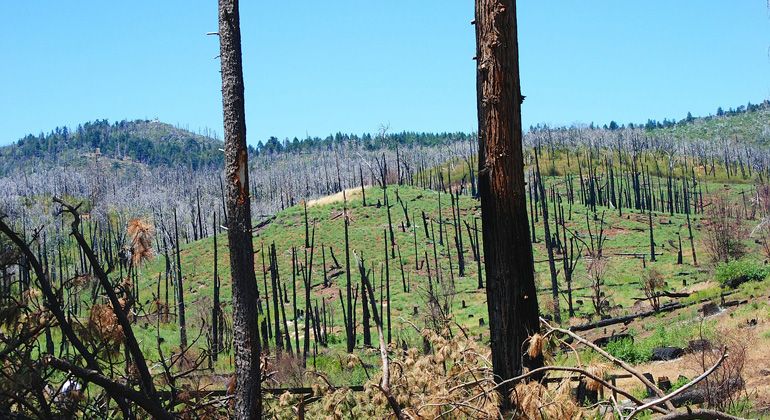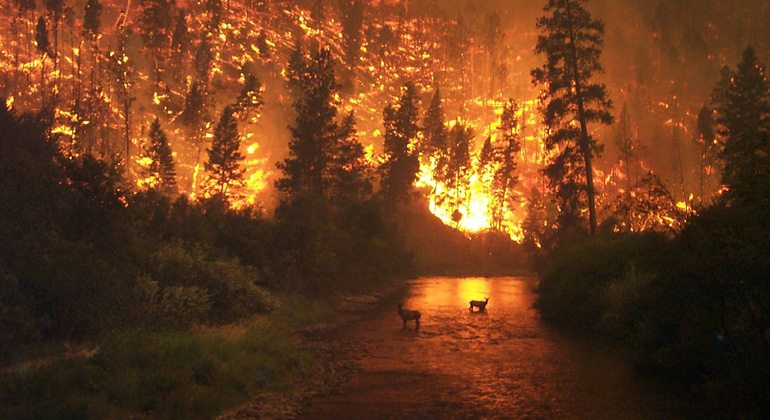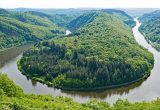Forest Health and Global Change
Forests cover a third of the land surface and we rely on them for a wide range of wood and food products, as well as services like cleaning water and storing carbon. Forests are also key regulators of global climate because they recycle water back to the atmosphere for later rainfalls.
In a review paper published on August 21, 2015 in the journal Science, researchers from Max Planck Institute for Biogeochemistry, Germany, and the Woods Hole Research Center, USA, summarize international research results on forest health and global change.
Since pre-industrial times, the area of forest has shrunk nearly 15%. It is currently decreasing at a rate of about 0.3% per year (an area equivalent to Germany every three years), due to logging and clearing that far exceeds the areas of re-growing or planted forests. But there is increasing concern over how forests respond to other, less visible, human impacts caused by hunting, selective logging, invasive pests, air pollution, and climate change. “Some forest functions may recover quickly, in years or decades, but others could take centuries to regain pre-disturbance levels. Many of these changes will have direct impacts on the services forests provide to people” says Susan Trumbore, lead author of the review.
Changes in forest condition are often used as a proxy for forest health. However, health is well-defined only for individuals – as the absence of disease. Although many countries carry out assessments of forest condition, researchers have struggled for decades to create operational definitions of forest health. For example, increased tree mortality may indicate a decline in forest health at a local scale, but dying trees play an essential role in forest regeneration and nutrient cycling and are therefore a necessary component of normal forest functioning. “For larger spatial scales, assessments of forest health are difficult due to a lack of common benchmarks that define what is a “normal” forest condition.” highlights Paulo Brando, coauthor of the article.
Reports of increased tree mortality across the globe are causing concern, however we lack the tools to analyze how big the problem is and what is causing trees to die. The satellites monitoring changes in global forest cover are limited to 30 x 30 meter pixels, where the death of a single tree will almost certainly go un-noticed. On the smaller scale, individual trees are monitored in permanent forest plots that track all trees in an area usually ranging from 400 to 2000 square meters. Most countries contributing to the FAO (Food and Agriculture Organization of the United Nations) global assessments of forest health maintain such plots, but since methods are not standardized, it is hard to spot and attribute trends in tree mortality across boundaries. New tools, like LiDAR (Light Detection And Ranging), are becoming available to fill the gap between plot observations and satellite imagery of the whole globe.
“Once trends in mortality are detected, we need additional research to understand how and why trees die” says Henrik Hartmann, coauthor of the publication. Experiments at tree and ecosystem scale, embedded in a monitoring framework of forest condition, are required to develop mechanistic understanding that can predict which trees are most vulnerable and how the capacity for forests to regenerate may be affected. “Without such an understanding we will not be able to predict the trajectory of complex forest responses to multiple stressors from local to global scales”.
Forests have been around longer than people, and have already experienced some dramatic events in Earth’s history. “Forests survived a wide range of environmental changes during the millions of years of their existence. They will probably prove resilient to rapid anthropogenic changes in climate and environment, but humans should still be concerned about changes in forest condition. After all, forests can live without us, but we cannot live without them.” underscores Susan Trumbore.
Original publication: Trumbore, S., Brando, P., Hartmann, H. (2015) Forest health and global change. Science Vol. 349 no. 6250 pp. 814-818, DOI: 10.1126/science.aac6759









